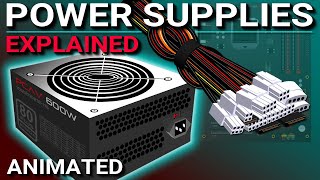
Power Supplies and 80 Plus Ratings Explained
 This is an animated video explaining computer power supplies and their connectors. It also explains the 80 plus efficiency certification that’s given to power supplies and the difference between non-modular, fully modular, and semi-modular.
This is an animated video explaining computer power supplies and their connectors. It also explains the 80 plus efficiency certification that’s given to power supplies and the difference between non-modular, fully modular, and semi-modular.
Coolermaster power supply calculator
https://www.coolermaster.com/power-supply-calculator/
My power supply (Amazon affiliate)
https://amzn.to/3E54ZZY
#psu #powersupply
Topics Include:
Intro: 00:00
Connectors: 00:43
Power Supply Wattages: 03:53
Modulars: 05:00
80 Plus Ratings: 06:37
Power Supply Story: 09:51
Be the first to comment